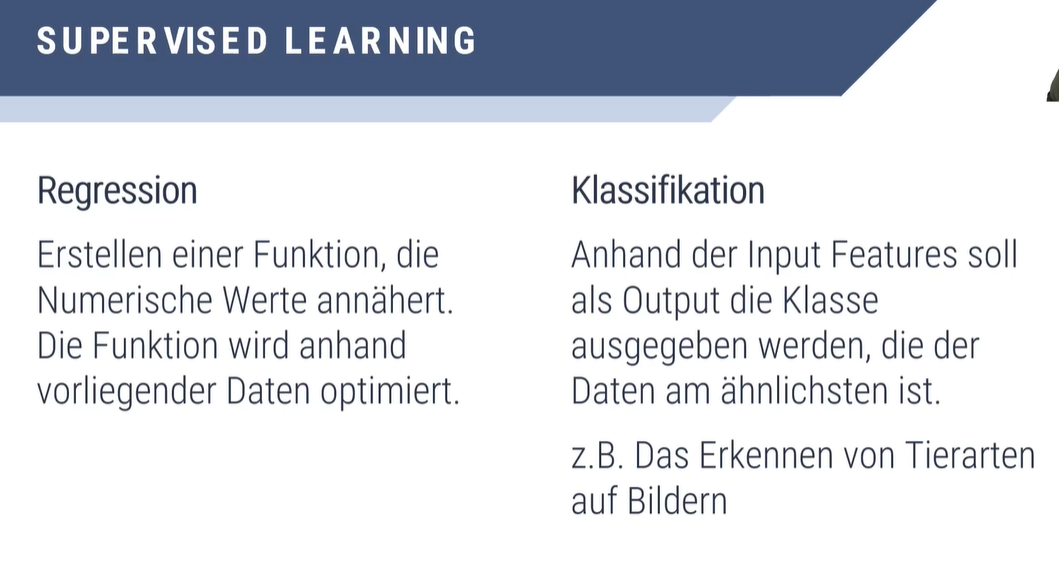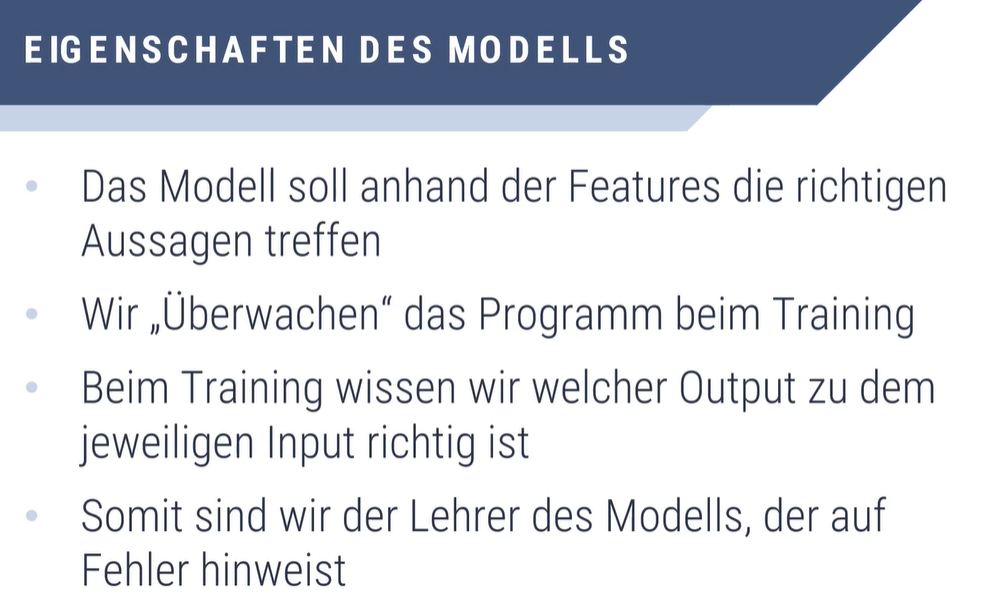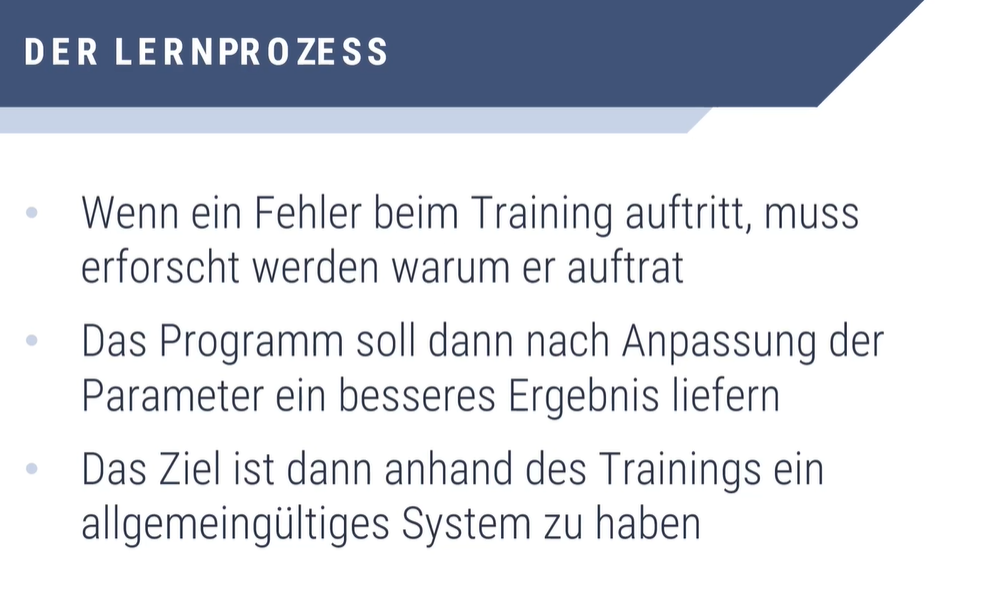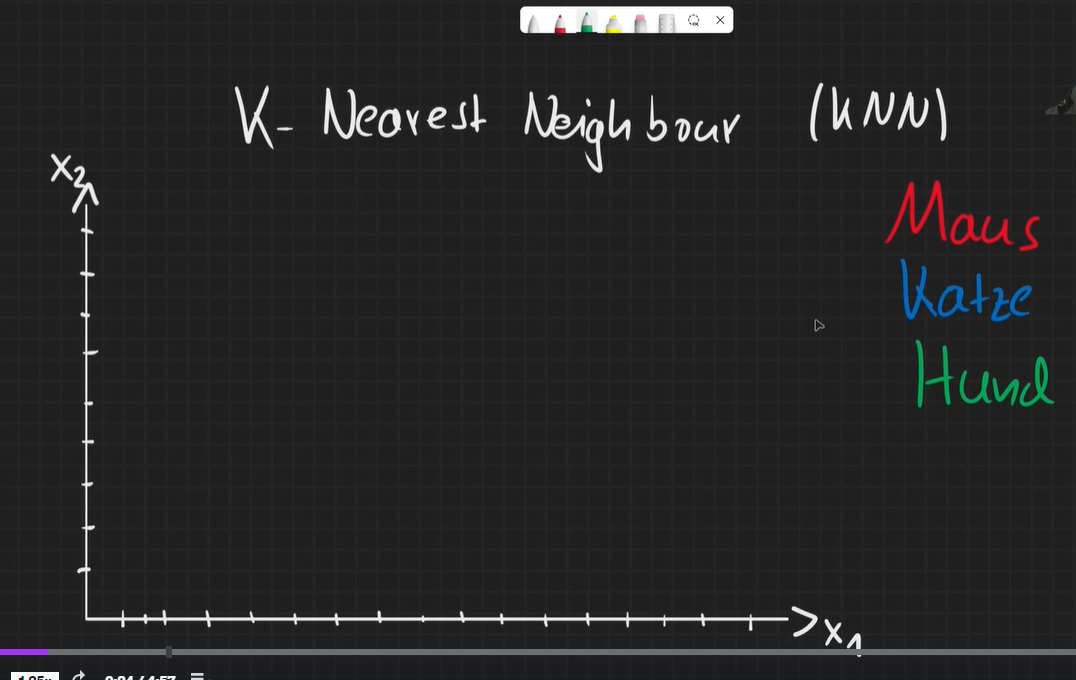Machine Learning (Udemy Kurs)
Theorie
Praxis
Module
Numpy
import numpy as npEin Array mit Numpy erstellen
x = np.array([-2, 1, 3, -10, 22])Matplotlib
import matplotlib.pyplot as pltEinen Plot erstellen
x = np.array([1,2,3,4,5])
y = np.array([2,-3,5,10,12])
# Scatter Plot # Punkte ohne Verbindung
plt.scatter(x, y, color="red")
plt.legend(['f(x)'])
plt.title('This is a title')
plt.xlabel('x')
plt.ylabel('f(x)')
plt.show()Mit zeilen verbinden
# Plot
plt.scatter(x, y, color="red")
plt.plot(x,y,color="blue")
plt.legend(['f(x)'])
plt.title('This is a title')
plt.xlabel('x')
plt.ylabel('f(x)')
plt.show()Listslicing und Arrays
import numpy as np
l1 = [i for i in range(20)] # Erstellt eine Liste mit Werten von 0 bis 19
l2 = l1[0:20:2] # Erstellt eine Liste aus der ersten Liste und zwar nur jeden 2. Wert
l3 = l1[:10] # Gibt die ersten 10 wieder
# Arrays mit Numpy erstellen
my_array = np.zeros(shape=(2,2)) # erstellt ein array mit 2 x 2 Zellen
my_rershaped_array = np.reshape(my_array, newshape=(4,))
# Zufallszahlen generieren
my_random_array = np.random.randint(low=0, high=11, size=20) # Ganzzahlen mit Randint
my_random_array2 = np.random.uniform(low=0.0, high=10.0, size=20) # Floatzahlen erstellenType Annotations
Festlegen welche Dateitypen für einen Parameter infrage kommen
class Car:
def __init__(self, name: str, oem: str, hp: int, year: int) -> None: # -> None bedeutet es wird nichts zurück gegeben
self.name = name
self.oem = oem
self.hp = hp
self.year = year
def get_info(self) -> str: # -> str bedeutet es wird ein String zurück gegeben
return "Name: " # self.name
def main():
car1 = Car(10, "Audi", 400, 2022)
info1 = car1.get_info()
print(info1)
if __name__ == "__main__"":
main()f-Strings
# Mit f-string kann man die Variable direkt in den String schreiben
f"Name: {self.name} OEM: {self.oem} HP: {self.hp}"




No Comments